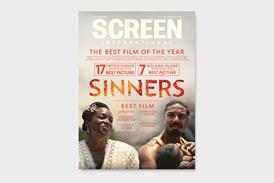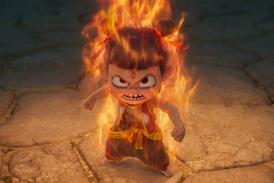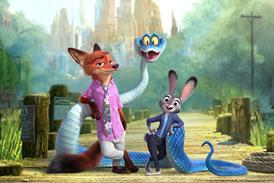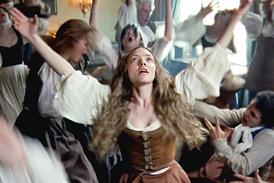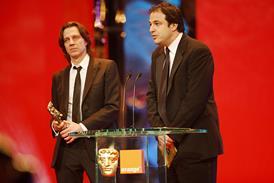Rithy Panh’s iconic figurines imagine an overthrow of the human race with little hope for the future

Dir: Rithy Panh. France/Cambodia. 2021. 98 mins
The latest film from Rithy Panh is a densely symbolic documentary essay which envisages a world in which the animals have risen up and taken over from humanity. Following the accelerating treadmill of atrocities of the twentieth and twenty-first centuries, our new overlords – pigs, bears, apes – have toppled the icons of the human race, yet all too quickly replaced them with statues and surveillance cameras of their own. Taking its title from the T-shirt slogan of a teenager who was killed in the Myanmar protests, the film combines influences from Animal Farm and Planet Of The Apes with a video flip-book approach to human cruelty and a cast of crudely whittled warthog figurines. It’s a singular vision and one which is not without a cruel cumulative power.
It’s a singular vision and one which is not without a cruel cumulative power.
Panh returns to competition in Berlin following a berth in the 2020 festival with Irradiés, which won the Berlinale Documentary Award. The film’s distinctive approach should ensure that it stands out in the non-fiction landscape; further festival screenings seem likely and the film could find a home with distributors or streaming platforms open to the more experimental end of the documentary spectrum.
Panh reunites once again with writer Christophe Bataille (Irradiés, The Missing Picture); here he contributes a lyrical and enigmatic narration which gives some loose shape to the images on screen. These images are composed of intricate dioramas filled with figurines, both animal and human, and split-screen projections of a fairly harrowing greatest hits compilation of humanity at its very worst. Images of war, oppression, animal vivisection, environmental destruction and what appears to be slave labour take a forthright approach to delivering the film’s message, but just as potent are the portrait photographs of victims of Cambodia’s Khmer Rouge (Panh himself lost family members to the regime). The little animal statuettes – apes in combat gear, pigs equipped with machetes – sit motionless in front of screens showing the archive footage: judging the failure of the human race, or learning and adopting its methods? In addition to the visual component, the sound design – incorporating a cacophony of animal noises – adds a layer of bestial brutality.
Panh’s film is thematically far-reaching and it does rather over extend itself, to the detriment of the clarity of its thinking. At times, the naivety extends beyond the roughly hewn little figures: Panh is not, it seems, a fan of science, or at least science in the wrong hands – in this case, any hands with opposable thumbs. A poster of Albert Sabin, the scientist who invented the oral polio vaccine, is shown crudely daubed with paint – a commentary on anti-vax sentiments? Or perhaps an anti-vax statement in itself? The latter seems unlikely but the fact that Panh’s ideological stance is not entirely clear at times is not a problem necessarily, but it does make the film rather hard work.
Essentially, despite an acknowledgement that beauty and harmony is possible, the majority of the film argues that humans are not just capable of atrocities, they are inclined to commit them. The default setting for mankind is to oppress others for personal gain. All in all, it’s pretty bleak: the film plays like a manifesto arguing the case for human extinction.
Production company: CDP
International Sales: Playtime info@playtime.group
Producer: Catherine Dussart
Screenplay: Rithy Panh, Agnès Sénémaud, Christophe Bataille
Cinematography: Rithy Panh, Prum Mesa
Editing: Rithy Panh
Music: Marc Marder
Production design: Sarit Mang
Art direction: Toh

